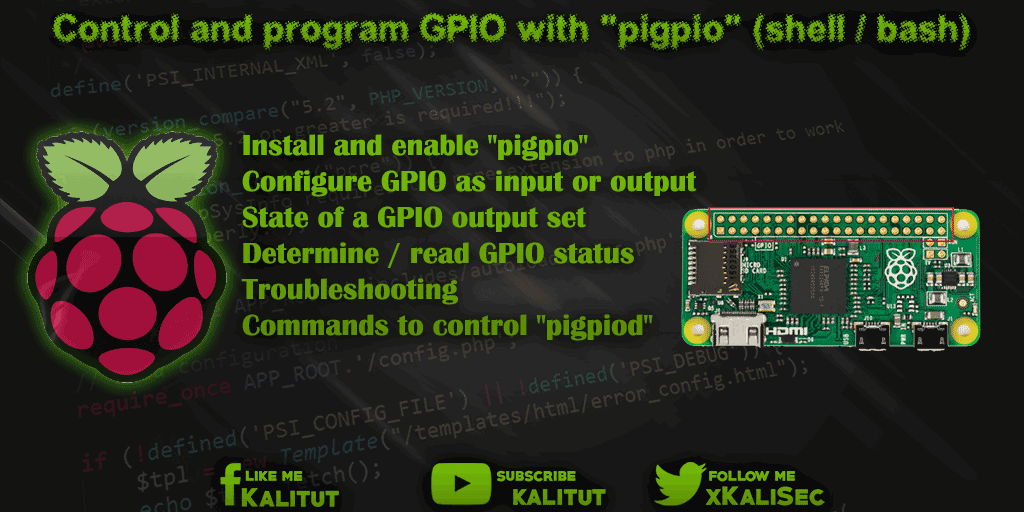Control and program Raspberry Pi pigpio (shell/bash)

Compared to controlling and programming the GPIOs via “sysfs”, “pigpio” on the command line is a simplification. The command line tool “pigs” also supports the programming of a GPIO as PWM and servo.
“pigpio” is also the preferred method for controlling and programming the GPIOs on the command line.
install pigpio on raspberry pi
If not already installed, the installation of “pigpio” is done with the following command.
sudo apt-get install pigpio
The control of the GPIOs is done with the command line tool “pigs”. For this to work, you must first start the pigpio daemon.
sudo systemctl start pigpiod
If you want the daemon to start automatically at system startup, then execute the following command.
sudo systemctl enable pigpiod
Then you can configure the individual GPIOs.
Configure raspberry pi GPIO as input or output
Here we select the GPIO 17 (pin 11) and GPIO 18 (pin 12) as examples to configure them as output and input. For this the BCM numbering of the chip is used. So the number of the GPIO and not the pin.
If the GPIO 17 is to be configured as output, the following command applies.
pigs modes 17 w
By default, the output gets the state “low” or “0”.
If the GPIO 18 is to be configured as an input, the following command applies.
pigs modes 18 r
State of a GPIO output set
Basically you can only set outputs. To set the state of a GPIO output to “high”, the following command is sufficient.
pigs w 17 1
To set the state of a GPIO output to “low” the following command is sufficient.
pigs w 17 0
Determine / read GPIO status
To determine the state, ie “high” or “low”, at a GPIO, the following command is sufficient. The GPIO can be both an input and an output.
pigs r 18
The output “1” stands for “high” or “0” for “low”.
Troubleshooting
When executing the pigs commands, the error message “socket connect failed” appears. This does not mean that the pigpiod daemon is not running. You have to start it yet.
Commands to control “pigpiod”
Start pigpio daemon automatically at system startup:
sudo systemctl enable pigpiod
Disable system startup:
sudo systemctl disable pigpiod
Start pigpio daemon:
sudo systemctl start pigpiod
Stop pigpio daemon:
sudo systemctl stop pigpiod
Show status of the pigpio daemon:
sudo systemctl status pigpiod

Leave a Reply